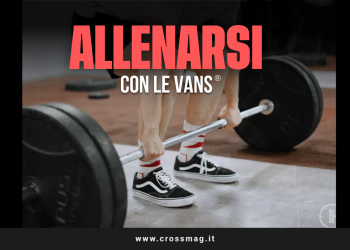Do you know what a litmus test is? (Yes, I'm asking you to go back to high school chemistry classes).
Litmus paper is a strip of paper that, when placed in contact with a substance, reveals whether it is acidic or basic.
Here: to stay in metaphor, the overhead squat is the litmus test of barbell exercises.
Let's see why (and what to do with this information).
Index
Overhead squat: the "spy" with a barbell
Yeah, why the OHS has the ability to reveal your weaknesses:
- flexibility
- force
- equilibrium
- coordination
- deficiencies in the core
 Then add that working on the OHS technique is painful. An adage says that to become an "expert" on one thing you have to do 10000 hours of practice. But who wants to do 10000 hours of OHS with an unloaded barbell?
Then add that working on the OHS technique is painful. An adage says that to become an "expert" on one thing you have to do 10000 hours of practice. But who wants to do 10000 hours of OHS with an unloaded barbell?
In short, it is clear that many are satisfied with a rookie overhead squat.
The overhead squat, to quote the good Glassman, "Cruelly punishes defects in posture, movement and stability". He is absolutely right.
Indeed training this movement is vitalbecause his carryover - the possibility of transfer to other movements - is very high. On the snatch and related variants first of all.
So, touch "put it away", and get technical.
5 things to improve for a screaming OHS
1 - progression of mobility
Get ready, because here we regress (but for a good reason). You have a great bodyweight squat (air squat)? Good. Retrieve an empty barbell and go to OHS.
The litmus test will tell you, most likely, that you will have to work on your shoulders: mobility first, strength then. Secondly, the OHS may show the deficiencies of the hips, hamstrings and buttocks. Isolate the mobility of each muscle district, and work on it.
2 - the midline, guys
Here we are in the realm of the core, because during OHS the core itself has to work hard. A weak core exposes you, during movement, to a very high possibility of accident. So: you have to work on midline stability.
I told you about the infamous midline just last week, also giving you a great exercise to boost it: the GHD. For the rest, follow the drills for a good OHS:
- tight ass
- rib cage protrudes downwards
- neutral pelvis, that is ...
- back not hyperextended
3 - make one + two
Having become aware of these first two elements allows you to work with the unloaded barbell for familiarize yourself with your body's response to OHS movement.
4 - tension and radiation
Without going into too much detail, always remember that your body, during OHS, must be a single point of uniform tension. This also affects the relationship between shoulders, push and bar. That is: not to be "passive" (being content to keep up the bar is wrong) but actively push the weight up.
5 - take your time
When in bottom position, don't try to get out of it immediately, even if the temptation is strong. Take the time to stabilize and do a voltage check of the different muscle districts.
Hey: the "check" lasts a second at most, as long as you are not working on movements Paused.
We have activated a lot of discounts on Amazon: from 30 to 70% on all sports categories! It's all on our dedicated channel ????
SUBSCRIBE HERE TO THE TELEGRAM CHANNEL











